Home > Climate News >

Protocols for bird-friendly habitat management certification
Audubon and its partner ranchers employ a variety of tactics to manage the land upon which cows graze. Together, these tactics are what leads to Audubon’s certification that certain beef products are produced with bird-friendly land-management practices
To get certification, ranchers follow a set of program standards in four areas: habitat management; forage and feeding; animal health and welfare; and environmental sustainability…

What in the world is conservation ranching?
“Wild bison were unwitting conservationists. As they roved the Great Plains, snacking here, trampling there, the hefty mammal carved diverse plant landscapes for any species’ nesting, mating, or hunting requirements. When humans substituted these shaggy ungulates for cows, the territory transformed. Without guidance, cattle mow fields to a single height and encourage only a couple plants to rebound. Few birds thrive in this monotony…”
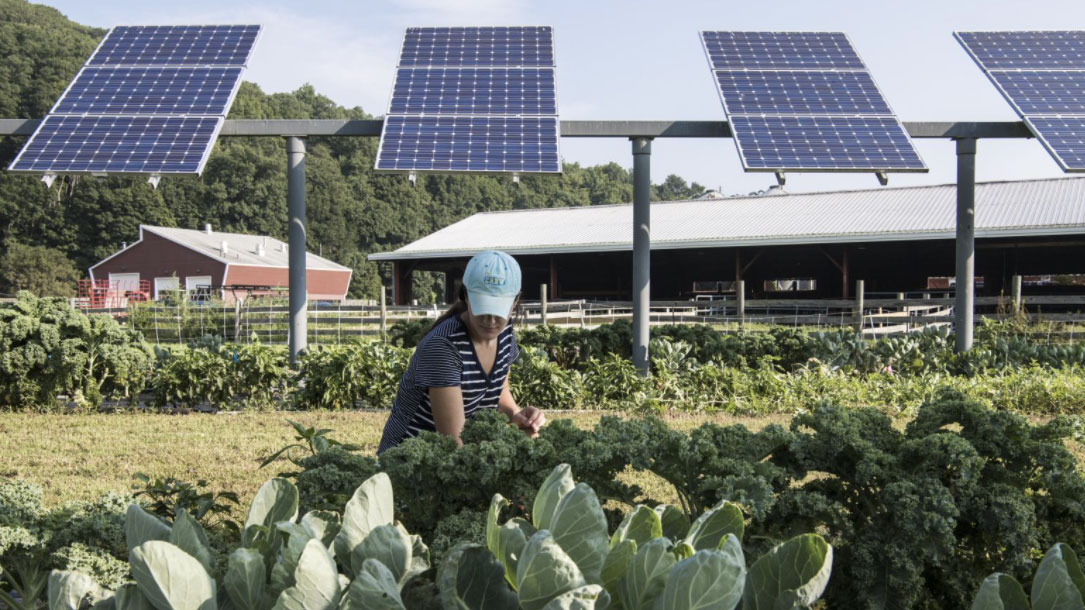
Benefits of agrivoltaics across food, water, energy sectors
Food and energy security need not be competing objectives. In fact, taking a holistic, integrated approach to food-energy-water decision making can increase resiliency of both food and energy systems…
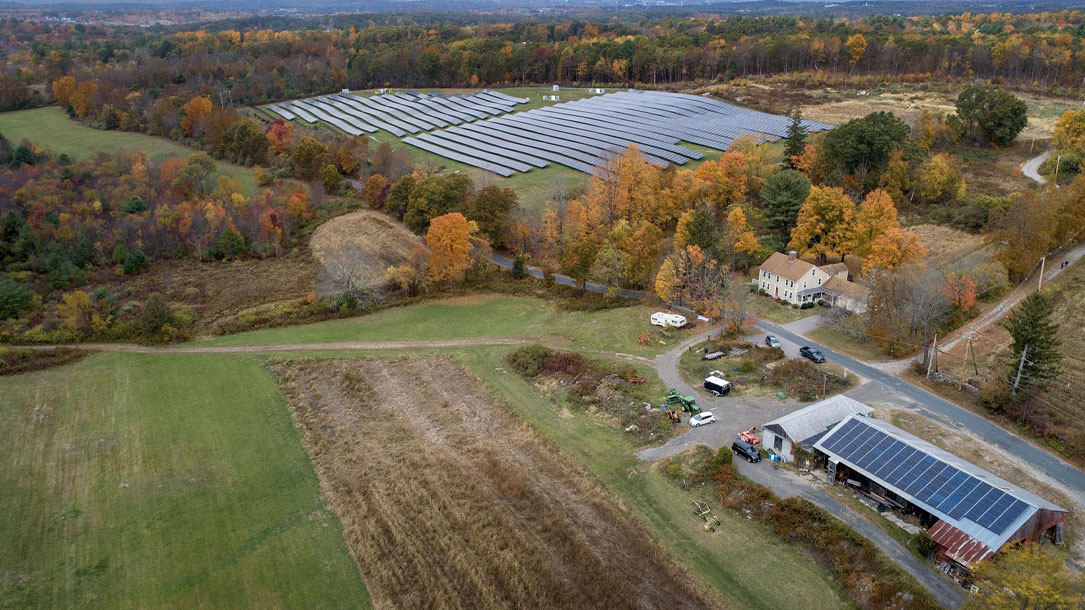
Farms will harvest food and the sun, as Massachusetts pioneers ‘Dual-Use’ Solar
Fickle weather and fluctuating prices make farming a risky business, so five years ago, [Paul] Knowlton installed a new cash crop: solar energy. He turned 19 acres into two solar energy fields. “Doing the solar was very beneficial,” he says. “In the wintertime there is no revenue for a farm. It’s a tough game.”
Knowlton wants to increase the production of solar power on his farm, expanding it to another 14 acres. But this time, cutting-edge technology is making it possible to harvest both the sun’s energy and crops on the same land. It’s called “agrivoltaics” or “dual-use solar”…Knowlton has nine children, and hopes solar will help the farm stay in the family. “We’re going to keep it for the next generation to enjoy,” he says.
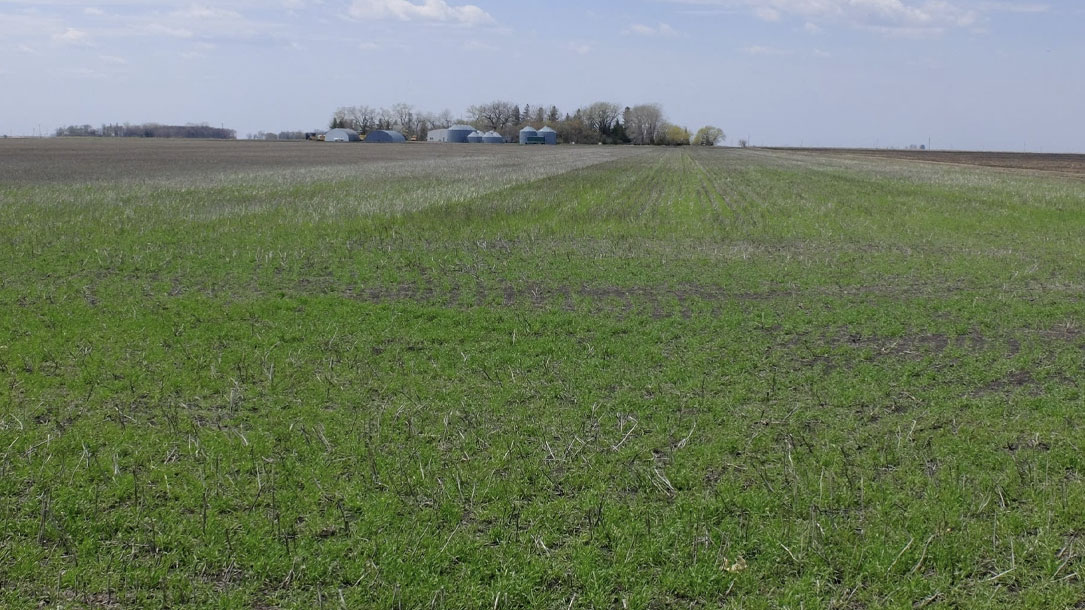
A ‘carbon bank’ could mean extra cash for Midwest farmers
A well-known Minnesota agribusiness hopes to turn climate change concern into cash for farmers.
Land O’Lakes, through its sustainability arm, Truterra, last week launched a carbon exchange program in which companies that want to reduce their greenhouse gas emissions can buy credits, and farmers get paid for increasing carbon storage in the soil…

Solar installation—Matsuda Farm
Does your land trust have an opportunity to install solar on its lands as part of an overall project, and education strategy?
The Vashon-Maury Island Land Trust is passionate about conserving land to protect the natural ecosystems and rural character of their islands amidst today’s rampant development. They created a video to talk about a solar installation on a farm they own and how it relates to their conservation goals.
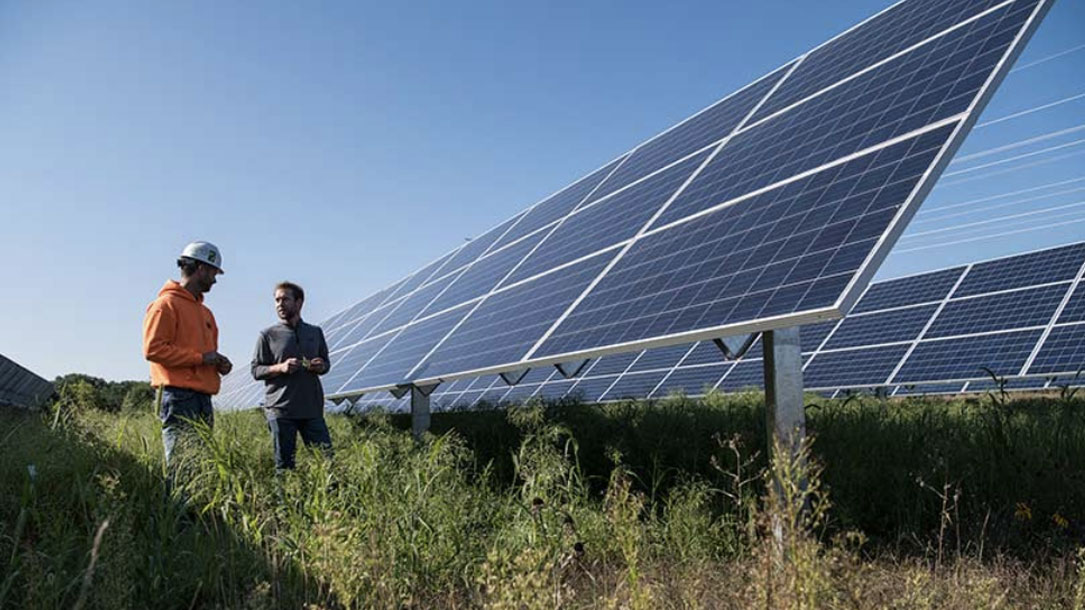
Beneath solar panels, the seeds of opportunity sprout
“On a humid, overcast day in central Minnesota, a dozen researchers crouch in the grass between rows of photovoltaic (PV) solar panels. Only their bright yellow hard hats are clearly visible above the tall, nearly overgrown prarie grasses—which are growing exactly as expected.
Bent over white, square frames, some of the researchers catalog the number and type of native plants growing on a square foot of land. Others press double-forked meters into the ground, measuring the soil moisture below the solar panels and in open ground. Nearby, beekeepers check on the health of local hives.
Their research is part of an ongoing study to quantify the benefits of a new approach to solar installations: low-impact solar development…”

Panel discussion: Integrated Energy Research on Agriculture & Water Challenges
Check out these slides from this detailed panel hosted by the Joint Institute for Strategic Energy Analysis just a few weeks ago…
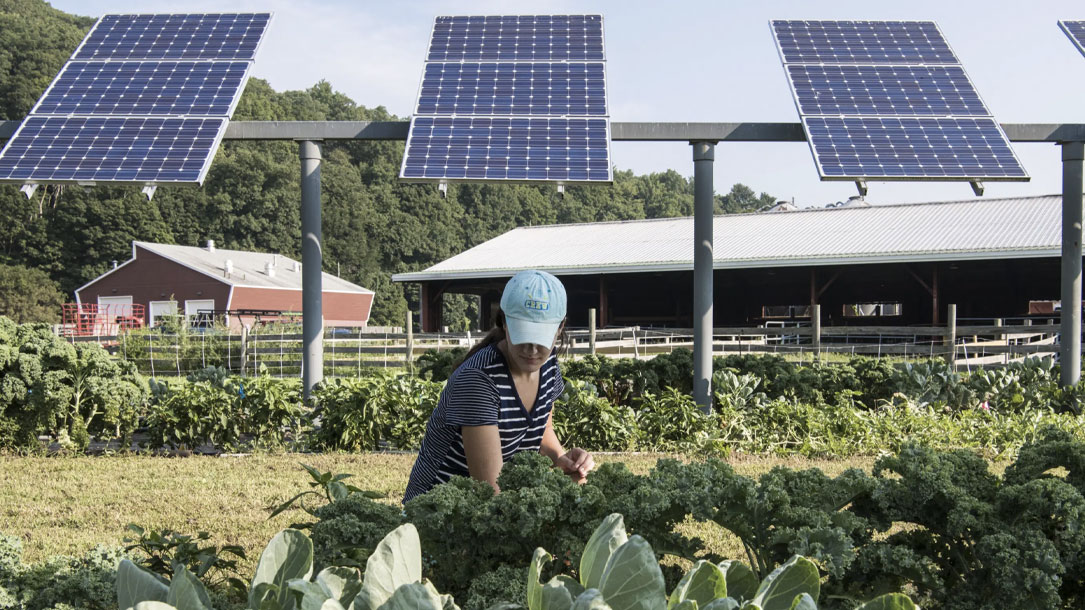
Can farmland fix solar power’s real estate problem?
Rooftop panels are great, but there just isn’t enough viable rooftop space for solar to take a meaningful bite out of carbon emissions in the US. For that, the country needs utility-scale solar farms, which can take up a lot of space—they could occupy an area the size of Connecticut by 2030, according to the National Renewable Energy Laboratory.
There needn’t be a trade-off between crops and electrons, [Chad] Higgins said; they can grow in tandem. Elevated solar panels installed above crops (so-called “agrivoltaics”) can provide an extra income stream for farmers if they lease the space for them to solar companies. And they can yield benefits for the farm itself: the shade can actually boost the yield of vegetables, decrease water consumption, and preserve the ability of soil to absorb CO2 from the atmosphere, according to an ongoing National Renewable Energy Laboratory (NREL) study. The study’s pilot sites have also found ways to combine solar with cattle and goat grazing, as well as apiaries for bees…

Saving Land magazine: Looking to the land to mitigate climate change
Recent reports that the planet had its hottest four years on record highlight the need for accelerated work to keep global warming below critical tipping points. While nations shift to carbon-neutral economies, Earth’s forests, grasslands, wetlands and soils can help reduce atmospheric carbon dioxide (CO2) levels. “Land trust work is more vital than ever,” says Kelly Watkinson, Land and Climate Program manager at the Land Trust Alliance, “because improved conservation, restoration and land management actions enhance the capacity of natural systems to absorb and hold carbon.”












